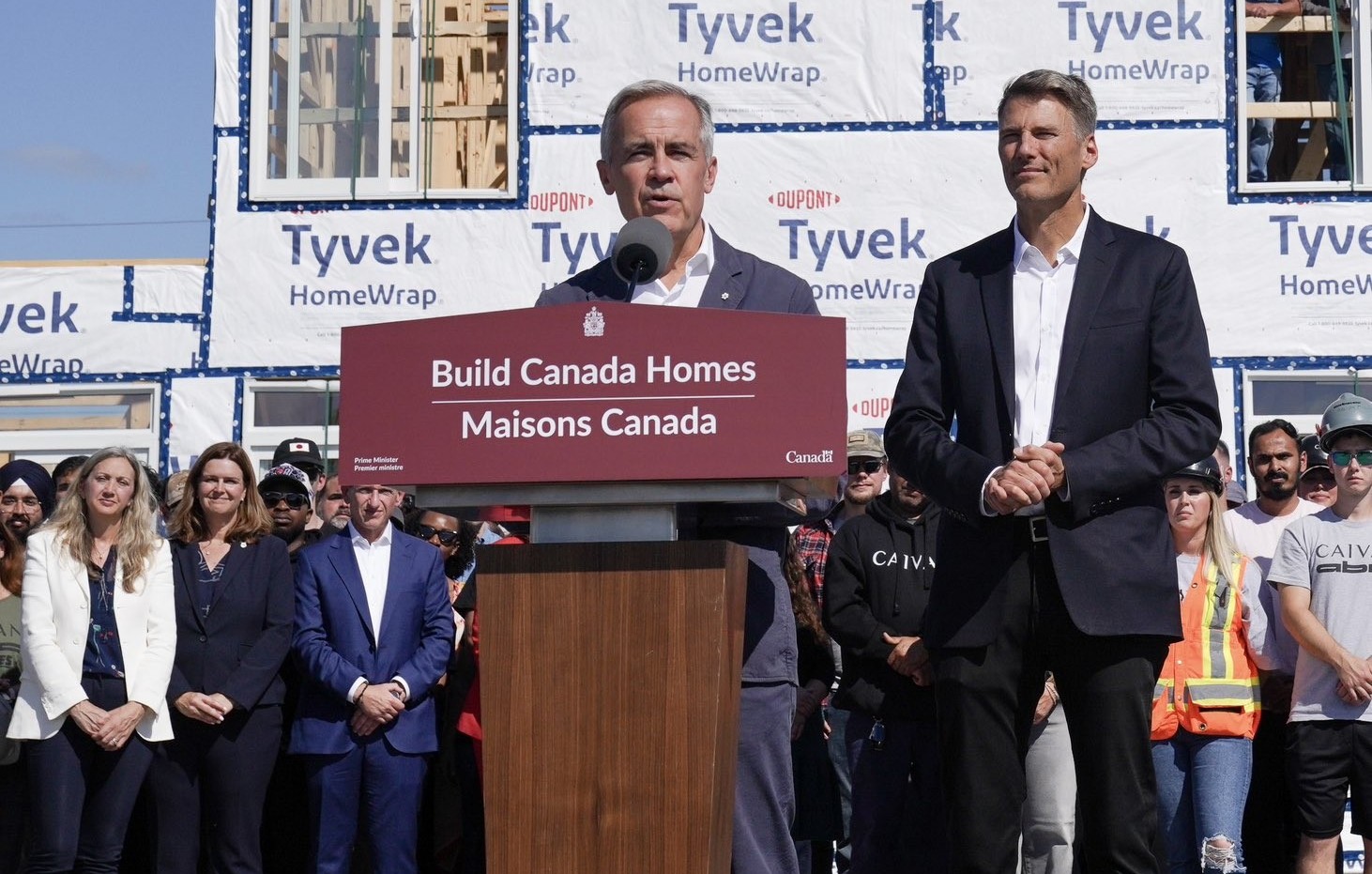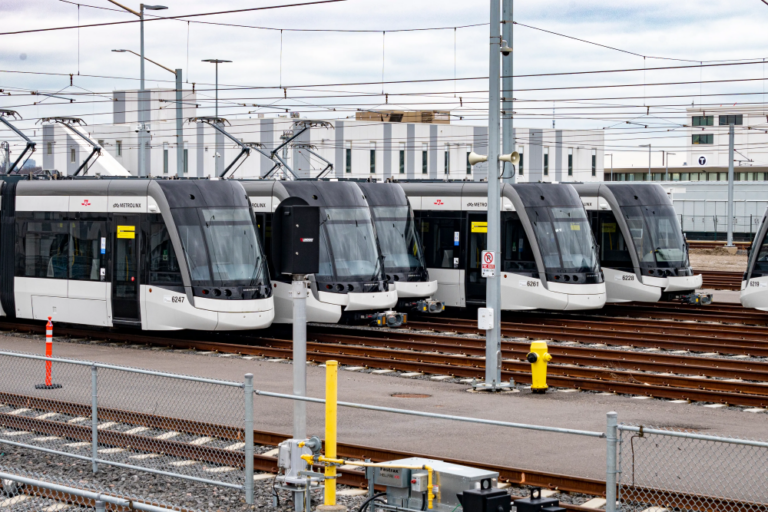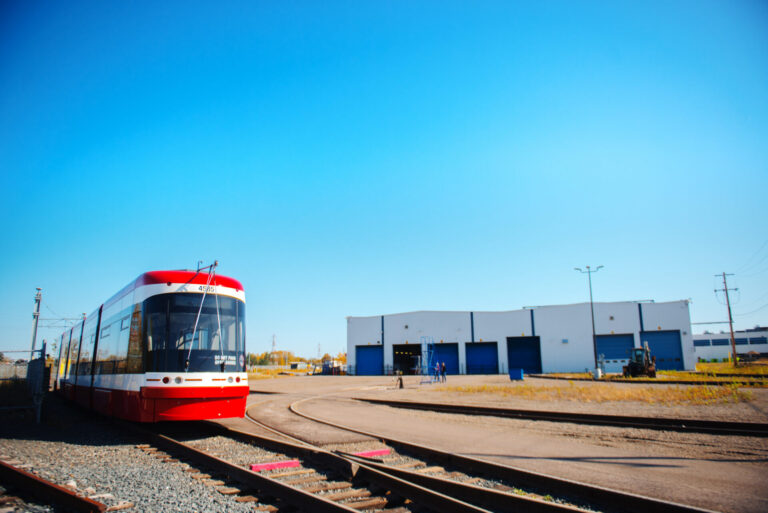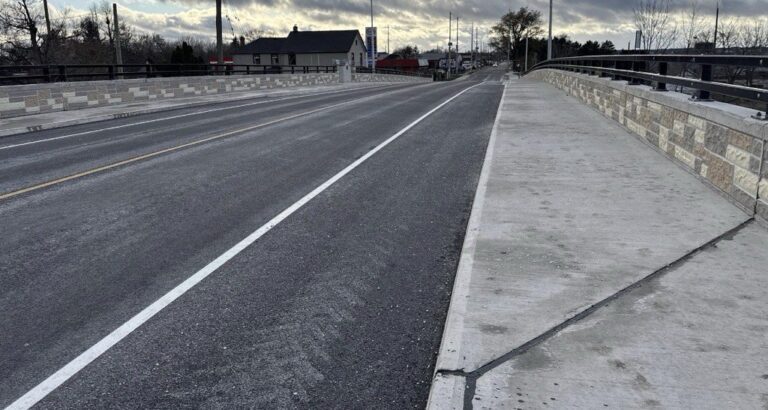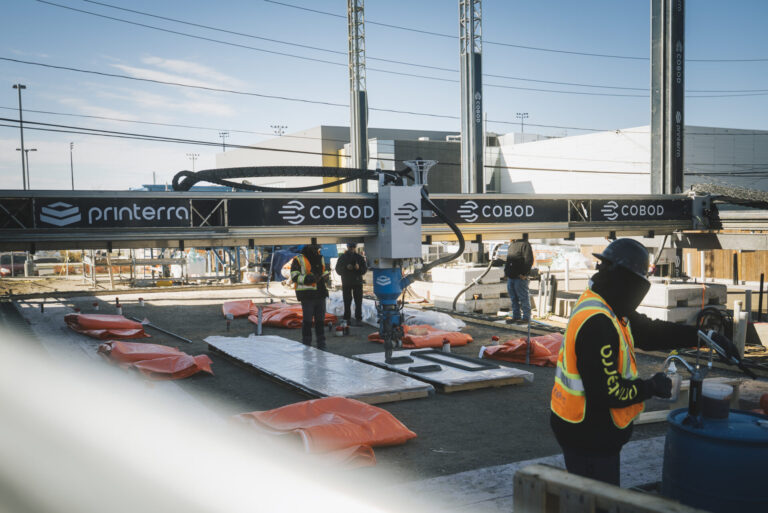Prime Minister, Mark Carney launched Build Canada Homes – a new federal agency that will build affordable housing at scale. Build Canada Homes will help fight homelessness by building transitional and supportive housing – working with provinces, territories, municipalities, and Indigenous communities. It will build deeply affordable and community housing for low-income households, and partner with private market developers to build affordable homes for the Canadian middle class.
“Canada’s new government is relentlessly focused on bringing down housing costs. Central to that mission is rapidly scaling up the supply of homes. Build Canada Homes will transform the way government works with the private sector to build. We will create an entirely new housing industry using Canadian technology, Canadian workers, and Canadian resources – and give builders the tools they need to build more, build sustainably, and build at scale,” said Carney.
According to the Prime Minister, the new federal agency will transform public-private collaboration and deploy modern methods of construction, as it catalyzes the creation of an entirely new Canadian housing industry. It will leverage public lands, offer flexible financial incentives, attract private capital, facilitate large portfolio projects, and support modern manufacturers to build the homes that Canadians need.
“It’s not just about building more – it’s about building better and building bolder. Build Canada Homes will support new ways of building, leverage public lands, and accelerate affordable home building to deliver real results for Canadians, so that everyone has a place to call home,” said Gregor Robertson, Minister of Housing and Infrastructure.
Canada’s new government will bring federal lands, faster approvals, and strong incentives to the table. The private sector will bring construction capacity, innovation, supply chains, and financing. Build Canada Homes will focus primarily on non-market housing, supporting a mix of income needs as part of a national effort to double housing construction, restore affordability, and reduce homelessness.
“Build Canada Homes is an opportunity to work together to deliver the housing Canadians need,” said Rebecca Bligh, president of Federation of Canadian Municipalities. “Municipalities are ready to help shape the right mix of housing to meet affordability and homelessness challenges. With the right federal tools including infrastructure investments that keep pace with growth we can build lasting solutions in communities across the country.”
There are three key pillars to this new approach:
- Build Canada Homes will partner with industry, other orders of government, and Indigenous communities to build affordable housing at scale and at speed. As the federal government’s new one-stop-shop for affordable housing, Build Canada Homes will make it easier and simpler for builders to access the resources needed to build new homes, faster. Canada’s new government will capitalize Build Canada Homes with an initial $13 billion, enabling financing, providing land, and helping builders get big projects off the ground. Build Canada Homes will offer flexible, financial incentives, approve large portfolio projects, and leverage public lands for housing so projects are derisked and private builders can focus on building. Build Canada Homes will partner on and lead developments of affordable housing projects, and by using public lands, take land costs out of the equation. To streamline construction on public lands, Canada Lands Company will be transferred under the Build Canada Homes portfolio. This will give Build Canada Homes access to the government’s land portfolio, including 88 federal properties suitable for housing listed on the Canada Public Land Bank, which span 463 hectares or approximately the size of downtown Ottawa. Federal ministers will also be instructed to determine suitable lands for housing construction owned by their departments.
- Build Canada Homes will deploy capital, create demand, and harness innovative housing technologies to build faster and more sustainably, 365 days a year. Build Canada Homes will place an intense focus on using cost-efficient and modern methods of construction such as factory-built, modular, and mass timber. Through bulk procurement and long-term financing, Build Canada Homes will mainstream these advanced methods of construction – with the potential to cut building timelines by up to 50%, reduce costs by as much as 20%, and lower emissions by approximately 20% during construction. To supplement these efforts, wherever possible, Build Canada Homes will prioritize low-carbon materials, low-carbon technologies, and efficient design. This will help catalyze a new housing industry – one that builds faster, and more sustainably, 365 days a year.
- Build Canada Homes will adopt the government’s new Buy Canadian policy and prioritize projects that use Canadian lumber and other Canadian materials. With the Buy Canadian policy, Build Canada Homes will channel demand through Canadian industries – from lumber and steel to aluminum and mass timber – strengthening domestic supply chains, scaling up a home-grown housing industry, and creating high-paying careers across the country. Canada’s new government is ensuring that the construction of new homes maximizes Canadian resources.
To lead this mandate, Carney announced the appointment of Ana Bailão as the chief executive officer of Build Canada Homes. Ms. Bailão is a seasoned leader with deep experience in advancing affordable housing, having served for over a decade on Toronto City Council – including as Deputy Mayor from 2017 to 2022, as Chair of the Planning and Housing Committee and on the board of Toronto Community Housing. While on City Council, Ms. Bailão spearheaded the creation of Housing Now, which uses city lands to build housing. Most recently, she has served as the Head of Affordable Housing & Public Affairs with the private developer Dream Unlimited Corporation.
“Affordable housing has always been more than policy – it’s a personal mission. From my time in public office to my work in the private sector, I’ve seen firsthand how safe, stable housing transforms lives. At Build Canada Homes, we are bringing together government, industry, and communities to build homes faster, smarter, and more sustainably. We’re not just building units – we’re building opportunity, dignity, and a future where everyone in Canada has access to the homes they need – and deserve,” said Bailão.
The federal government also announced its first four investments and initiatives:
- As Build Canada Homes begins to develop public land sites under Canada Lands Company’s portfolio, it will prioritize innovative, factory-built housing. To begin, Build Canada Homes will prioritize six sites to build 4,000 factory-built homes on federal land – with additional capacity of up to 45,000 units across the portfolio. In these projects, it will deploy a “direct-build” approach, overseeing and leading construction projects focused on affordable mixed-income communities. This first tranche of sites will be in Dartmouth, Longueuil, Ottawa, Toronto, Winnipeg, and Edmonton.
- To help protect existing affordable rental housing, the $1.5 billion Canada Rental Protection Fund will be launched under Build Canada Homes. This initiative will support the community housing sector in acquiring at-risk rental apartment buildings, ensuring they remain affordable over the long term. It also aligns with Build Canada Homes’ broader mandate to grow the supply of affordable and non-market housing – not only by building new homes, but also by preserving the ones on which Canadians already rely.
- Build Canada Homes will deploy $1 billion to build transitional and supportive housing for people who are homeless or at risk of homelessness. It will collaborate with key provincial, territorial, municipal, and Indigenous partners to pair these federal investments with employment and health care supports.
- Build Canada Homes will partner with the Nunavut Housing Corporation to build over 700 public, affordable, and supportive housing units. Approximately 30% of the units are expected to be built off-site, using innovative construction methods such as factory-built housing.
“This commitment to factory-built housing and prefabricated building components, including both mass timber and light wood frame systems, directly supports the architects, engineers, and builders we work with every day. It enables them to rapidly deploy quality homes at scale, while meeting Canada’s sustainability and affordability goals,” said Rick Jeffery, President and CEO of Canadian Wood Council.
Featured image: Prime Minister Mark Carney (left) and Gregor Robertson, Minister of Housing and Infrastructure.. (Government of Canada)

